Training and Continuing Education
Table of Contents
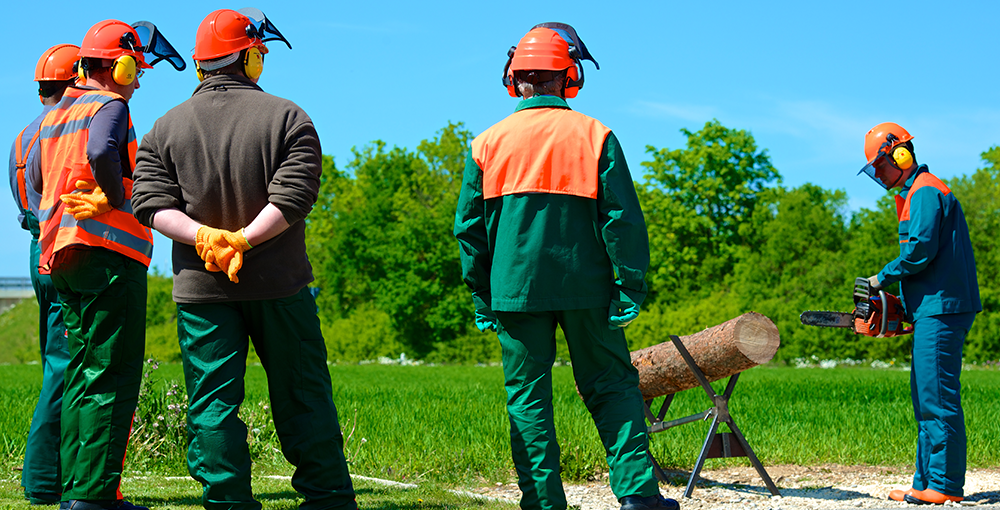
Job Shadowing a Neighboring Roadside Manager
After the roadside manager has begun working, the TPC roadside program manager will give the person an opportunity to job shadow an experienced roadside manager from a nearby county who is willing to help new roadside managers. This allows the new roadside manager to develop an early peer relationship and learn how another county approaches roadside management.
Chemical Safety/Handling
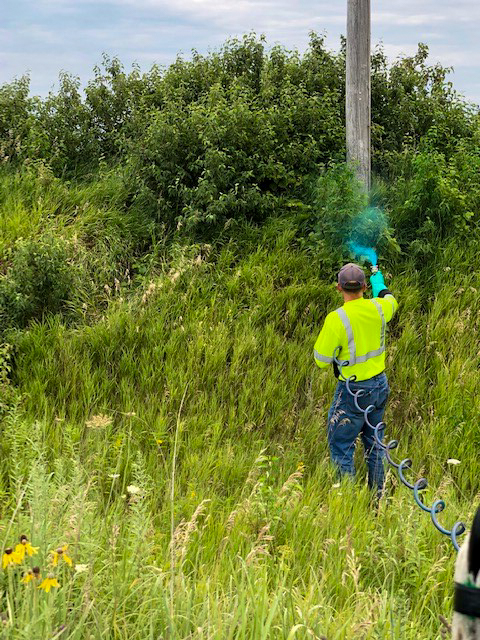
Controlled pesticide application is a useful part of the IRVM toolkit. Pesticide use in roadside rights-of-way is considered public pesticide application, which requires a state Commercial Pesticide Application license. To become licensed, the roadside manager must pass a 50-question, closed-book exam over the Core Manual - Iowa Commercial Pesticide Applicator Manual; pass a 35-question exam specific to right-of-way pesticide application; and pay a $15 fee for public applicators. Check here for Applicator Licensing and Certification testing dates from the Iowa Department of Agriculture and Land Stewardship.
Commercial Driver’s License
The Iowa DOT requires operators of vehicles that weigh at least 26,001 pounds to obtain a commercial driver’s license (CDL). Large pickups with trailers with a drill or spray equipment can top this weight. To obtain a CDL, applicants must complete applicable entry-level driver training from a registered training provider. Training providers charge an average of $4,000. For more information, see the Federal Motor Carrier Safety Administration Training Provider Registry.
Chainsaw Safety
There are several options for in-person chainsaw safety training:
- Have a representative from the company that manufactures the chainsaws you use come to your shop and train your employees. An advantage of this approach is that they can also look at your equipment and let you know if it needs any maintenance. A drawback is that some representatives may be less familiar with providing field demonstrations of safe brush removal techniques.
- Find an experienced county conservation board employee who periodically conducts chainsaw training.
- Find a nearby land management organization or nature center that periodically conducts chainsaw training.
- Attend chainsaw training at a community college with a land management program. For example, Hawkeye Community College regularly offers classroom-based chainsaw training with a representative from Stihl. Check with Hawkeye instructor Ryan Kurtz (ryan.kurtz@hawkeyecollege.edu) to find out when the next class is being offered.
- Receive training from a company that regularly conducts chainsaw training. These are more common in Wisconsin and Minnesota.
These are some useful online resources for chainsaw training:
- Forest Safety Instruction, LLC: Offering hands-on in-person safety training in the Midwest, including Iowa.
- Safe Training Online: Offering an OSHA-compliant online chainsaw training course.
- 360 Training OSHA Campus: Offering an OSHA-compliant online chainsaw training course.
Prescribed Burning
Controlled burns are a useful and cost-effective IRVM tool. Burning roadsides helps to control weeds, eliminate brush, and return nutrients to the soil. The Iowa Department of Natural Resources (DNR) forestry website lists relevant courses in prescribed burning. To become certified (known as “Red Card” certification) to conduct controlled burns, one must complete a field day (part of the S-130 firefighter training course) and a series of online courses. Field day options are usually listed on the Iowa DNR website in early spring.
Plant Identification
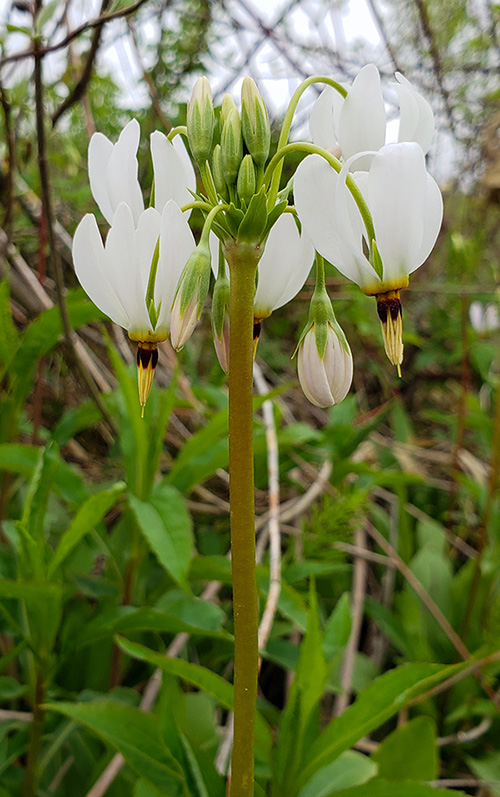
Identifying native and non-native plants is a vital skill for roadside managers. While recognizing noxious weeds may seem more important, it is equally important to recognize where native prairie plants are. Prairie remnants may be found on the sides of roads and train tracks. Remnant prairies are especially well-adapted to their environment, which makes them valuable sources for native seed.
Plant identification resources exist for every learning style. Commonly used resources are listed below.
Webinars
- Botany Beginners—Exploring Iowa’s Native Plants: This Tallgrass Prairie Center course includes six one-hour webinars teaching people the basics of plant identification using Newcomb’s Wildflower Guide as a resource, and three webinars produced in partnership with Practical Farmers of Iowa featuring hosts in a prairie pointing out common prairie plants.
- Botany Beginners—Grasses for the Masses: Seven one-hour webinars from the TPC about cool-season and warm-season grass identification.
- Botany Beginners—Managing Prairie Strips: A TPC course for those who manage prairie strips and other Conservation Reserve Program plantings within farmland..
- Golden Hills Resource Conservation and Development (RC&D): Plant identification webinar recordings, many of which are taught by botanist Dr. Tom Rosburg. Some of the webinars that might be especially useful to roadside managers include:
Books and Guides
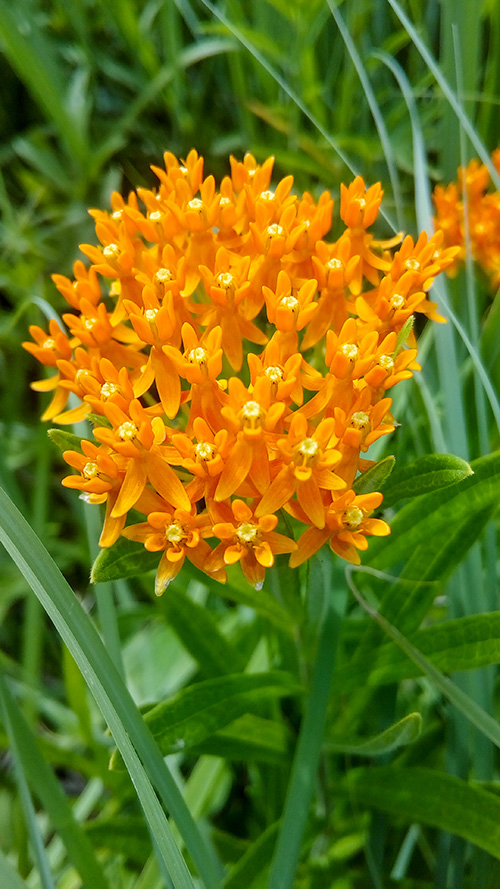
With training, roadside managers can develop a keen eye for native prairie plants, like butterfly milkweed (Asclepias tuberosa). Newcomb’s Wildflower Guide: This is the textbook used for the Botany Beginners courses. This guide contains both native and non-native wildflowers, shrubs, and vines. Its breadth (1,375 species) and easy-to-use key make it a valuable resource.
- Wildflowers of the Tallgrass Prairie: This is the textbook used for the Botany Beginners courses. This guide contains both native and non-native wildflowers, shrubs, and vines. Its breadth (1,375 species) and easy-to-use key make it a valuable resource.
- Wildflowers of the Tallgrass Prairie: The Upper Midwest: This guide contains high-quality images of 78 species, most of which are wildflowers. It is particularly useful for information on prairie remnants and ethnobotany. The guide is arranged in order of flowering time. It doesn’t include a key and has fewer species than the other books mentioned. The guide’s creators also produced complementary field guides for the wetlands and forests of the upper Midwest.
- Prairie Plants of the University of the Wisconsin–Madison Arboretum: : This is the most detailed guide on the list. It includes horsetails, ferns, rushes, sedges, grasses, shrubs, vines, weeds, and wildflowers and features both flower and fruit photos. Because the guide is arranged by plant family and doesn’t have a key, it is recommended for audiences who are already familiar with botany.
- Weeds of the Great Plains: This guide features weeds commonly found in Nebraska and neighboring states, including Iowa.
- Native Seed Production Manual: This TPC manual features basic information for native seed production of up to 100 species of the tallgrass prairie flora of the upper Midwest.
- The Prairie in Seed Identifying Seed-Bearing Prairie Plants in the Upper Midwest: This book includes plant identification, seed descriptions, seed harvesting and cleaning information, and more.
- The Tallgrass Prairie Center Guide to Seed and Seedling Identification in the Upper Midwest: This guide shows how to help identify and germinate 72 species of tallgrass wildflowers and grasses.
Websites
- USDA PLANTS Database: The Plant List of Attributes, Names, Taxonomy, and Symbols (PLANTS) provides standardized information about vascular and nonvascular plants and is useful for finding federal and state listings of weeds that are considered introduced, invasive, and noxious.
- Minnesota Wildflowers: This field-guide-style website has photos and information on Minnesota wild plants as well as guidance on how to search for them using multiple methods.
- Illinois Wildflowers: This website provides useful ecological information on the wild plants of Illinois.
- Iowa Weed Commissioners: This website includes weed identification brochures from nearby states and the Hawkeye Cooperative Weed Management website.
Plant ID Apps

Because plant ID apps aren’t 100% accurate, it is important to learn the basics of plant identification techniques using the resources above. That said, reputable plant ID apps can be used to provide roadside managers with a starting point when identifying plants. The apps also contain other information about species such as location, prevalence, etc. It is also good to be aware of the reputable apps to inform citizens who ask about them. Here are two that have been well-reviewed by amateur botanists.
Conferences and Field Days
Conferences Attended by Roadside Managers
The conferences listed below offer opportunities to network with other roadside maintenance professionals and participate in continuing education. Most roadside managers attend the winter Association for Integrated Roadside Management (AFIRM) meeting and the Iowa Roadside Management Annual Roadside Conference. Many also attend the weed commissioners conference, also known as the Iowa Invasive Species Conference. All three conferences include a lot of information directly related to roadside vegetation management and counties and cities are encouraged to budget for roadside managers to attend.
The other meetings listed are attended by fewer roadside managers, such as those who live near the meeting location. The TPC roadside program manager may be able to offer a limited number of scholarships covering the registration fee for roadside managers.
Winterfest—Iowa County Conservation System
- Approximate date: A three-day meeting typically held during the third or fourth week of January in Coralville.
- A variety of sessions led by academics and professionals working in conservation in Iowa and nearby states.
- Attended by a variety of county conservation staff and many college students on Wednesday for collegiate day.
- Includes an exhibition area with vendors and other organizations.
Winter Meeting—Association for Integrated Roadside Management (AFIRM)
- Approximate date: A one-day meeting held between late February to mid-March.
- Presentation and discussion topics are of interest to roadside managers.
Invasive Species Conference—Iowa Weed Commissioners’ Association
- Approximate date: A three-day meeting between late February to mid-March in the days immediately following the AFIRM meeting.
- A separate meeting for new weed commissioners is held in the late afternoon on the day of the AFIRM meeting.
- Presentations by researchers and practitioners, and an opportunity for continuing education in pesticide application.
- Attended by weed commissioners and conservation professionals whose role includes weed management.
- Includes an exhibition area with vendors and other organizations.
Iowa Prairie Conference
- Approximate date: Held every other year (typically in the years the North American Prairie Conference is not held) at a location in Iowa.
- Presentations about managing and restoring tallgrass prairie, with a focus on Iowa.
- Attended by natural resource professionals, researchers, and prairie enthusiasts.
North American Prairie Conference
- Approximate date: A four-day meeting held roughly every other summer at a location in the central United States.
- A focus on advances in managing and restoring tallgrass prairie ecosystems.
- Attended by researchers, students, and stewardship professionals.
- Includes an exhibition area with vendors and other organizations.
Roadside Conference—Iowa Roadside Management
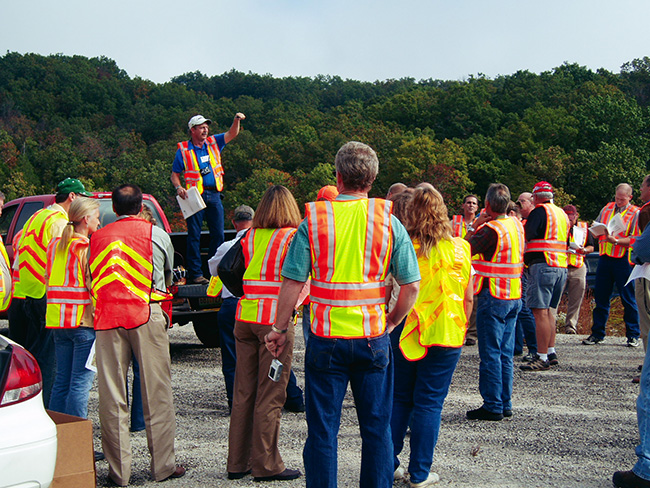
The annual Iowa Roadside Conference includes presentations and opportunities to learn in the field. Approximate date: A three-day meeting in September or October.
- Includes an afternoon of field trips.
- Attended by roadside managers, Iowa Department of Transportation staff, and others interested in roadside management.
- Includes an exhibition area with vendors and other organizations.
Upper Midwest Invasive Species Conference
- Approximate date: A three-day meeting held every other year in mid-October to mid-November.
- One of the most comprehensive and largest invasive species conferences in the United States.
- Attended by a wide variety of researchers, natural resource professionals, and government agency staff.
- Includes an exhibition area with vendors and other organizations.
Conferences With a Roadside Management Table
The Iowa Roadside Management Office at the TPC has a table in the exhibition area at some of the events below to educate attendees about roadside vegetation management. The table may be staffed by the TPC roadside program manager or roadside managers, whose registration fees would be covered by the TPC. A small number of roadside managers may also attend some of these conferences on behalf of their county or city.
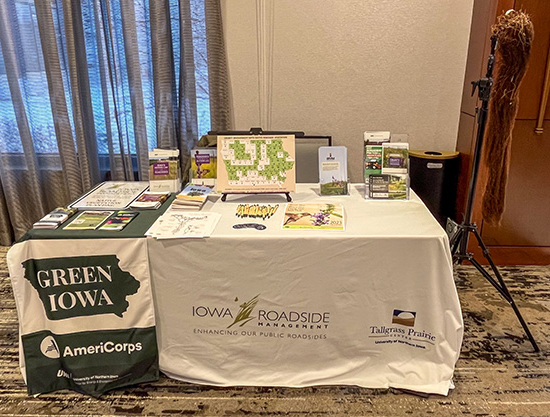
Statewide Supervisors Meeting
- Approximate date: A one-day meeting held in early February in Des Moines.
- Attended by members of county boards of supervisors.
- Includes an exhibition area with vendors and other organizations.
Iowa State Association of Counties Spring Conference
- Approximate date: Three-day conference held in March in Des Moines.
- Attended by all types of county employees.
- Includes an exhibition area with vendors and other organizations.
Iowa Statewide Association of Counties Fall Conference
- Approximate date: Three-day conference held in August in Des Moines.
- Attended by all types of county employees.
- Includes an exhibition area with vendors and other organizations.
Iowa County Conservation System Fall Conference
- Approximate date: Three-day conference held in mid-September at a location in Iowa.
- Attended by county conservation staff, especially conservation board directors and others in leadership positions.
- Includes an exhibition area with vendors and other organizations.
Iowa Streets and Roads Workshop and Conference
- Approximate date: One-day workshop and two-day conference held in September in Ames or Des Moines.
- Attended by secondary road and street maintenance supervisors and staff and others interested in road and street maintenance.
- Includes an exhibition area with vendors and other organizations.
County Engineers Conference
- Approximate date: Three-day conference held in mid-December in Des Moines.
- Attended by county engineers and other secondary road department staff.
- Includes an exhibition area with vendors and other organizations.
Field Days
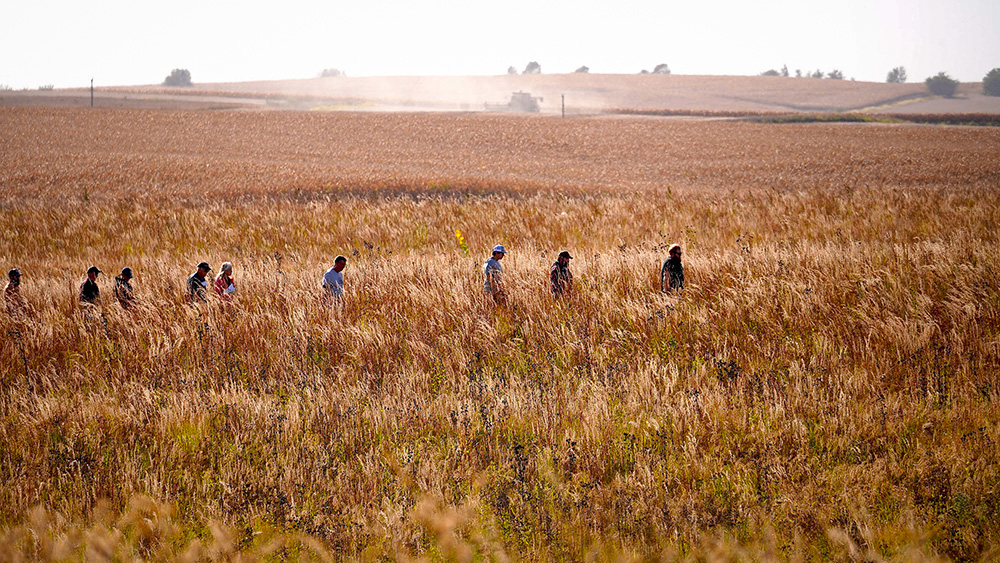
Many conservation-oriented organizations and equipment dealers offer useful field days. The organizations listed below host virtual and in-person field events.
Practical Farmers of Iowa
- A series of free field days during the growing season on topics related to sustainable agriculture, including prairie seeding and burning.
- Attended by natural resource professionals and private landowners.
Prairie on Farms Program (Tallgrass Prairie Center)
- One or two field days (not held every year) on planting native vegetation in agricultural fields.
- Attended by farmers and natural resource professionals interested in prairie restoration.
Hawkeye Cooperative Weed Management Area Invasive Species Field Day
- An annual field day held in August at a location in eastern Iowa.
- Topics include managing invasive species and other land management topics.
- Attended by natural resource professionals and private landowners.
- Includes an exhibition area with vendors and other organizations.
Iowa Learning Farms
- A free webinar series on topics related to land management such as soil health, improved water quality, and pollinator conservation.
- All webinars are archived on its website.
Iowa Prairie Network Field Events
- Various prairie walks, seed harvesting, and prairie workshop events around the state.
- Attendees become more familiar with prairie plants and learn about Iowa’s natural landscape.
Email Lists and E-newsletters
Joining email lists and subscribing to email updates and e-newsletters is a good way to keep up with the latest news in roadside equipment, vegetation management, and roadside management in Iowa and beyond.
Roadside Management Email List

The TPC roadside program manager maintains a roadside management Google Group email list. Email the TPC roadside program manager to be added to the group. Group members can pose questions to the group to provide insight and search archives of previous questions. Members pose questions to the group to gain insight about others’ experiences with equipment, share job openings, and share time-dependent news that can’t wait for the monthly Roader’s Digest email update.
Roader’s Digest Email Update
The Roader’s Digest newsletter, deemed the “Newsletter of the Iowa Integrated Roadside Vegetation Management Program,” was established by the TPC roadside program as a paper newsletter from 1989 to 2009. In 2017 it was reinstated as a monthly email update. Subscribe and read previous email updates and archived issues.
Midwest Invasive Plant Network E-Newsletter
The MIPN e-newsletter contains invasive plant news from around the region. People can subscribe and read previous newsletters on the MIPN website.
Iowa Native Plant Society Discussion Group
The Iowa Native Plant Society maintains a discussion group available to anyone interested in native plants.
Professional Organizations
Belonging to one or more of the following organizations can be an avenue for making professional connections and keeping up with innovations in vegetation management:


